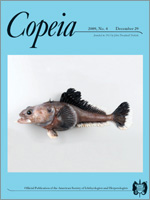The tuatara, Sphenodon punctatus, is known to exhibit a male-biased sexual size dimorphism, often attributed to the territorial behavior of males. Our data based on preserved specimens from museum collections also show a previously undocumented dimorphism in head and limb shape in Sphenodon, with males having bigger heads and longer limbs for a given body size than females. A review of the existing literature on the ecology and behavior of these animals suggests that this may provide males with a greater sprint speed capacity relevant to territory defense. Differences in head shape, on the other hand, may be related to ecological niche differentiation as males have been suggested to eat larger prey than females, but this remains to be tested. An additional role for sexual selection in driving the divergence in head shape between males and females is likely but cannot be confirmed at present.
How to translate text using browser tools
29 December 2009
Sexual Shape Dimorphism in Tuatara
Anthony Herrel,
Vicky Schaerlaeken,
Jiří Moravec,
Callum F. Ross
ACCESS THE FULL ARTICLE





